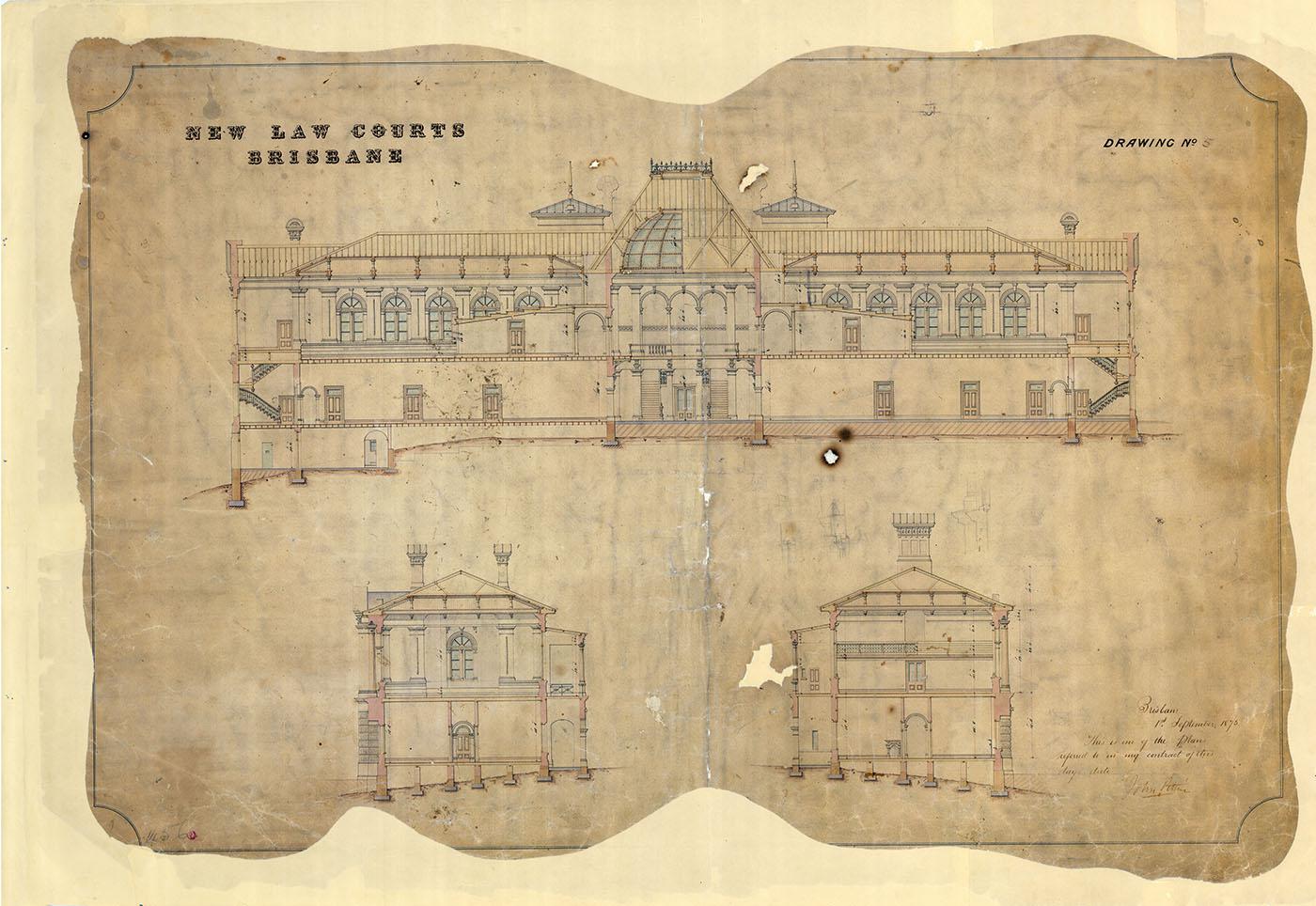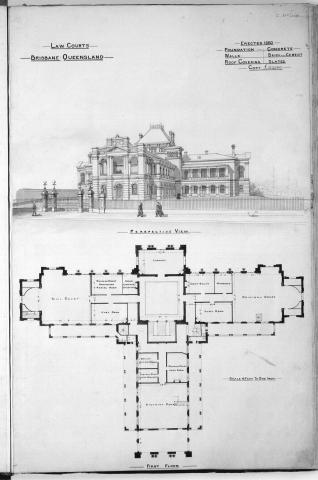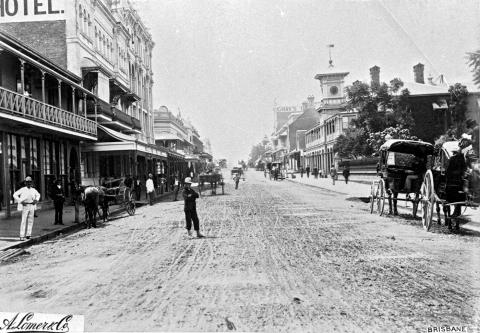Plans of the Supreme Court
Law Courts, George St, Brisbane
This drawing of the Supreme Court is signed and dated by John Petrie.
Supreme Court of Queensland: A Concise History
"It was not until the mid-1870s that the need for a new building for the Supreme and District Courts became acute. By this time, Parliament was told, ‘it had become almost impossible to conduct the ordinary business of the Court in the present building. The traffic on the street created such a great noise that it was impossible sometimes to hear either the witnesses giving their evidence or the counsel or Judge addressing the jury.'
With the population and economy of Queensland steadily growing, the need for new accommodation for the courts could no longer be ignored. At the time of separation, the site currently occupied by the City Hall had been reserved for the new courthouse. The first Colonial Architect, Charles Tiffin, had prepared ‘dignified and imposing’ plans for this site. However, this expensive proposal was not pursued. By 1874, a more modest proposal was favoured. The site of the original convict hospital in George Street had become available for redevelopment, because of the relocation of the Brisbane Hospital to Herston (1867). The task of designing a courthouse for this site was entrusted to Tiffin’s successor, FDG Stanley, who designed a building with three arcaded wings in the shape of a T, which radiated from a central tower. This design would maximise the natural light and ventilation available to each of the courtrooms and offices, and would use arcades and balconies to moderate the temperature of the principal rooms. These were important considerations in Queensland, at a time before electricity was available for lighting or air-conditioning. The design was well received at the time, but could not proceed to be constructed in stone because of the cost. With some modification, John Petrie was awarded the contract to construct the building in rendered brick for about £33,000"
Then and now...

You might also like
Location of this image
View Larger Map | See more historic photographs
- Category
- Time period
- Persistent identifierItem ID: 328564
- Queensland State Archive series linkSeries ID: 17690 Architectural Drawings of Public Buildings
- Queensland State Archives digital image linkQueensland State Archives Image ID 5345
- Contributing organisationAgency ID: 8481 Public Works Department I

